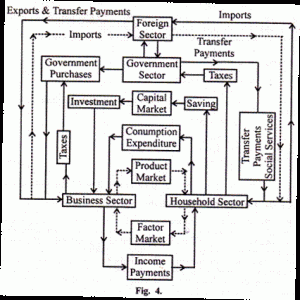What are the Factors of Production
Content

Land is a passive factor whereas labour is an active factor of production. Actually, it is labour which in cooperation with land makes production possible.
What is the most important in the 4 factors of production?
Land is generally considered one of the most important factors of production. Certain industries rely on land more than others.
With the help of such technology, as well as better feed, today’s dairy cows produce 50% more milk than did cows 20 years ago. Even though the number of dairy cows in the United States in the last 20 years has fallen 17%, milk output has increased 25%.
Labor As a Factor
Instead, it makes it possible for business owners and entrepreneurs to buy equipment, pay for real estate, or pay employees, which streamlines the production processes. Capital is viewed by contemporary mainstream economists as the principal source of value. Capital, labor, land, and entrepreneurship are the four main production factors. Land, labor, capital, and entrepreneurship are the production factors. Determining which factor is the most important depends on your school of economics.
Forward Thinking on what deep history might tell us about today’s … – McKinsey
Forward Thinking on what deep history might tell us about today’s ….
Posted: Wed, 15 Feb 2023 00:00:00 GMT [source]
Entrepreneurs start up businesses, combine the other factors of production, and bring buyers and sellers together. Whatever is used in producing a commodity is called its inputs. For example, for producing wheat, a farmer uses inputs like soil, tractor, tools, seeds, manure, water and his own services.
Labor as a Factor of Production
Capital — this has many meanings, including the financial capital raised to operate and expand a business. In much of economics, however, “capital” means goods that can help produce other goods in the future, the result of investment. It refers to machines, roads, factories, schools, infrastructure, and office buildings which humans have produced to create goods and services. You will notice that I did not include money as a factor of production. Money is not capital as economists define capital because it is not a productive resource.
What are some examples of land as a factor of production?
Land includes any natural resource used to produce goods and services; anything that comes from the land. Some common land or natural resources are water, oil, copper, natural gas, coal, and forests. Land resources are the raw materials in the production process. These resources can be renewable, such as forests, or nonrenewable such as oil or natural gas.
An example of this is the change in https://personal-accounting.org/ processes in the information technology industry after jobs were outsourced to countries with lower salaries. Capital is a factor of production that has been produced for use in the production of other goods and services.
What is the Relationship Between the Factors of Production and Economic Growth?
This key Factors of Production: Land, Labor, Capital in the production process includes people such as factory workers, construction workers, and employees in the service industry. These are all considered human capital and their purpose spans all types of labor across all industries. The factors of production are required to produce goods or services. They primarily include forms of labor, financial capital, entrepreneurism, and any natural resource. The “subject of labor” refers to natural resources and raw materials, including land. The “instruments of labor” are tools, in the broadest sense.
The United States is a technological innovator in creating capital goods, from airplanes to robots. That’s why Silicon Valley is a critical comparative advantage in the global market. The Bureau of Labor Statistics measures the U.S.labor force. It releases the current U.S. jobs report the first Friday of each month. Capital is also considered to be mobile because it can be transported to different places, such as computers and other equipment. Learn more about the Econ Lowdown Teacher Portal and watch a tutorial on how to use our online learning resources. Fragmentation is the use of various suppliers and manufacturers to produce a good.
Bill Gates and Henry Ford, for example, combined capital, labor, and land in new ways. James Woodruff has been a management consultant to more than 1,000 small businesses. As a senior management consultant and owner, he used his technical expertise to conduct an analysis of a company’s operational, financial and business management issues. James has been writing business and finance related topics for work.chron, bizfluent.com, smallbusiness.chron.com and e-commerce websites since 2007. He graduated from Georgia Tech with a Bachelor of Mechanical Engineering and received an MBA from Columbia University. He has forklifts to move products around the warehouse, and he has machinery that assembles the parts.

Facilities such as visitors’ centers, roads, and campgrounds are capital. The Mars project was destroyed by Hurricane Katrina in 2005. Royal Dutch Shell completed repairs in 2006—at a cost of $200 million. But, the facility is again pumping 130,000 barrels of oil per day and 150 million cubic feet of natural gas—the energy equivalent of an additional 26,000 barrels of oil. A firm cannot use money directly to produce other goods, so money does not satisfy the second criterion for capital.
